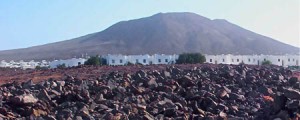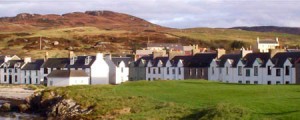Lanzarote may not seem an obvious spiritual companion for the Hebridean Isle of Islay. One is known for harsh volcanic landscapes bathed in year round sun, the other for windswept northern beauty and distinctive whiskies. Ending a week in Lanzarote on Sunday, I was on Islay by Monday, working on our master plan for extending the original planned village at Bowmore. However, Urban Animation isn’t the only connection between these two distant places.
Both are remotely located and depend on strategic transport links. Both have visitor economies, driven by climate in Lanzarote, distilleries and ornithology in Islay (booze ‘n’ birds to our tabloid readers). Both have a preponderance of whitewashed buildings reflecting vernacular style to varying degrees. Both have developed under the influence of innovative planning regimes.
Local artist and designer Cesar Manrique is credited with thwarting the worst tourist excesses by promoting a low rise development policy and design code in Lanzarote. Building form, finish and colour display an unusual unity. But it’s not all good news. The boom is well and truly bust and large scale development has exposed terminal flaws in the code.
The result is a suburban wasteland of vacant villas with the odd expat leading an isolated existence in the relentless sunshine. The uninhabitable black lava fields are a backdrop to uninhabited rows of whitewashed holiday homes. Both are equally lifeless. In these bleak circumstances, the lesson that traditional coastal and rural villages are not characterised simply by their architecture, but by the manner in which their buildings relate to one another and the uses they host, seems almost secondary.
Islay has not experienced the same boom yet faces its own issues, including population decline, housing need and constrained transport links. Partly as a result of these stifling factors, the villages and landscape retain much of their unique identity – most of the Islay villages are original planned settlements with a distinctive building typology and urban form. This slower rate of change on Islay has fostered indigenous growth, where people and places adapt to changing circumstances over a period of time.
We hope to provide a framework within which organic and sustainable growth can flourish at Bowmore. We also hope the sun shines while we’re doing it.
“This island is almost made of coal and surrounded by fish. Only an organising genius could produce a shortage of coal and fish in Great Britain at the same time.” Aneurin Bevan, 18 May 1945



